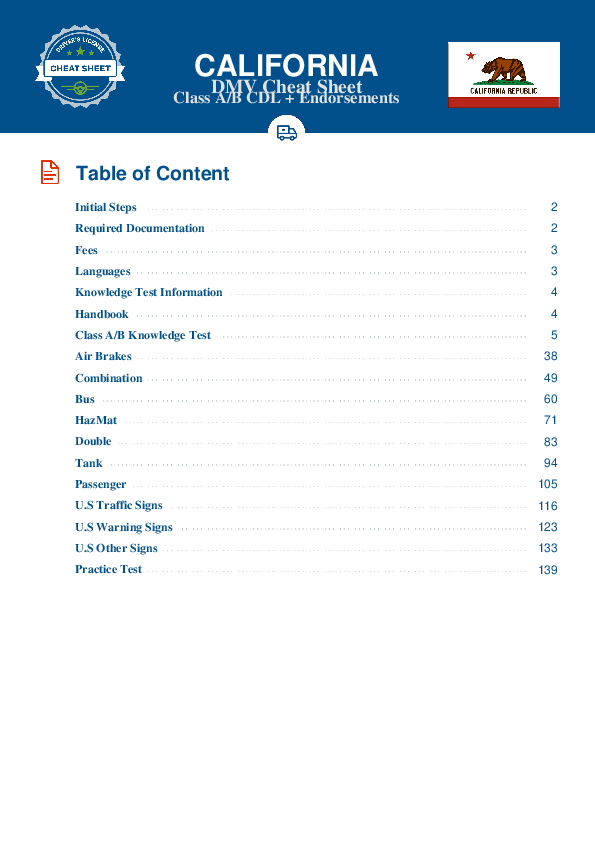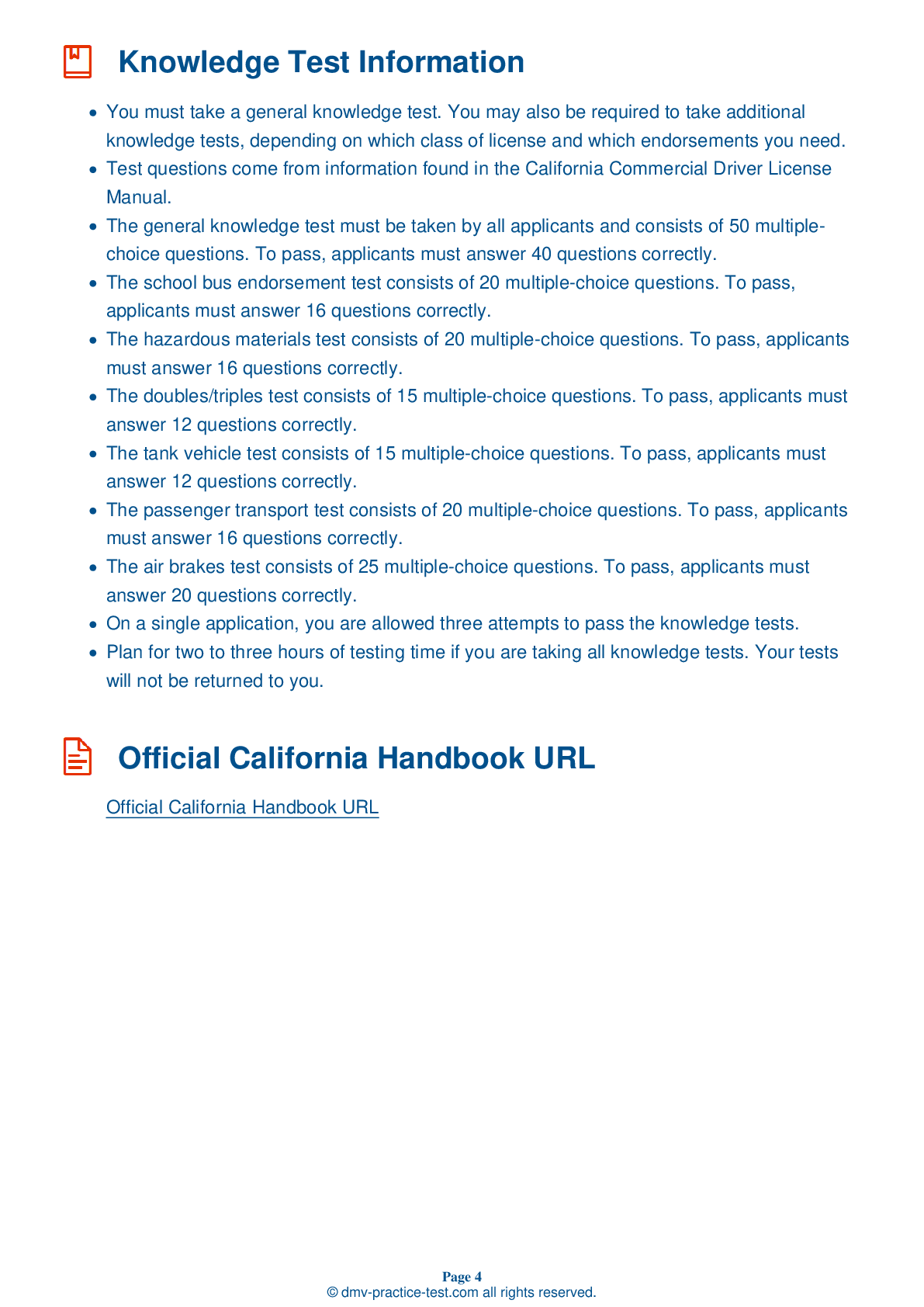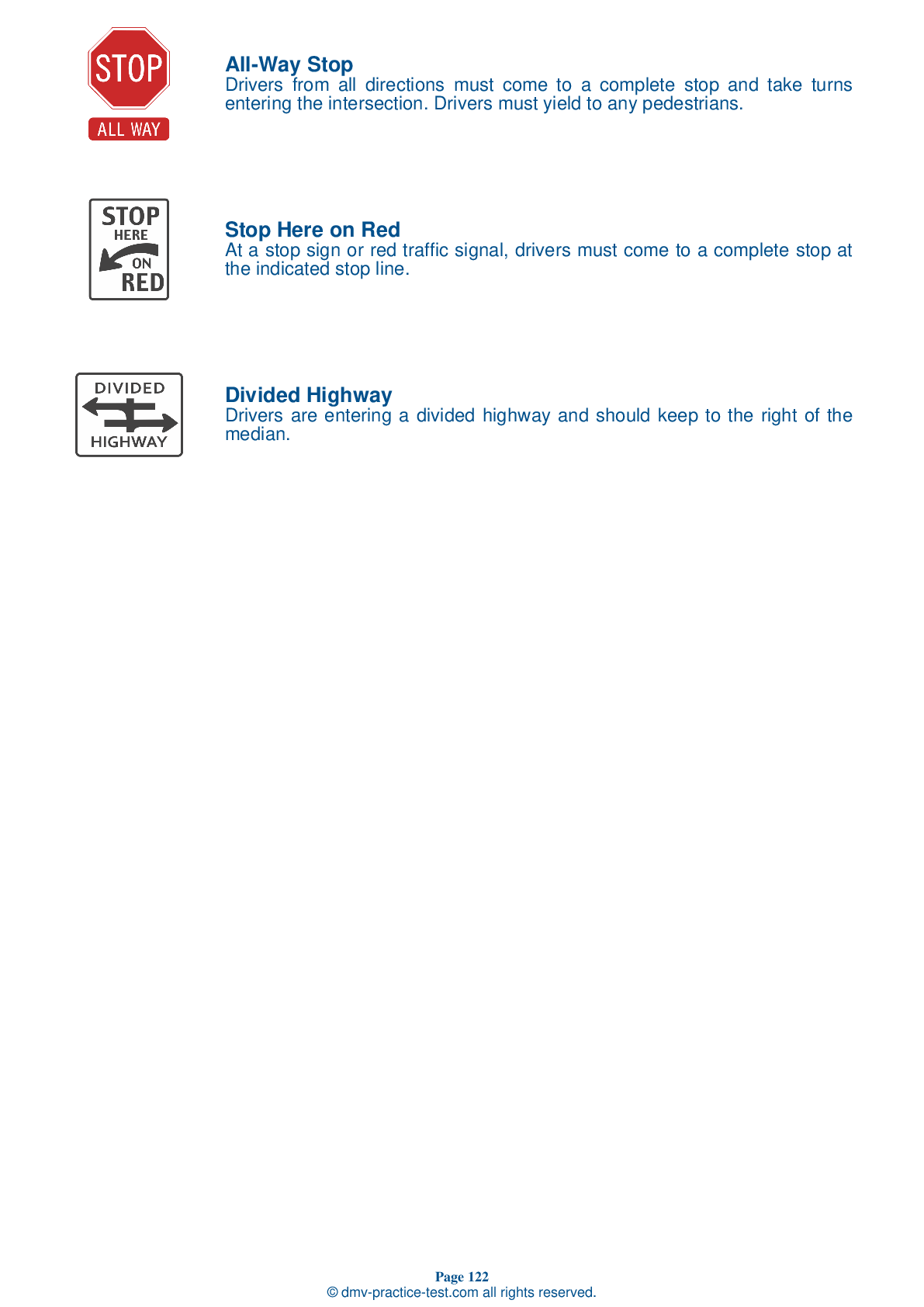Air Brakes #2
Air Brakes Endorsement Test | California 2025 #2 Page 2 of 4
Train for FREE online with our California CDL air brake test. The official exam test consists of several obligatory parts, with all of them checking your knowledge of different blocks of road rules. If you need to obtain a CA Class A/Class B driver license in 2025, practice as much as possible. Free sample tests published on our website will help you check and improve your knowledge and boost your grades. Please bear in mind that the requirements for CDL may vary from state to state.
25
20
20
7 . When a brake pedal is pressed and the S-cam is turned, the S-cam:
When a brake pedal is pressed and the S-cam is turned, the S-cam presses the brake shoes against the inside of the brake drum. This causes friction and will cause the vehicle to slow.
8 . During a static leakage test, the maximum leakage rate for a triple combination vehicle with air brakes is ____ in a minute.
When performing a static leakage test on a triple combination vehicle with air brakes, the leakage rate should be no more than 5 psi in one minute. If air leaks from the air brake system at a quicker rate, the vehicle should not be driven because something likely needs to be repaired.
9 . In a dual air brake system, air pressure should build from 85 to 100 psi within ____ seconds.
When inspecting a vehicle with a dual air brake system, you should wait for air pressure to build from 85 to 100 psi in both the primary and secondary systems. This should take about 45 seconds.
10 . If the spring brakes are on, you should:
Do not use the brake pedal when the spring brakes are on. This could damage the brakes by subjecting them to the combined forces of springs and air pressure.
11 . A dual air brake system:
A dual air brake system is made up of two separate air brake systems. The systems share a single set of brake controls, but each has its own air tanks, hoses, and lines. One system typically operates the regular brakes on the rear axle or axles while the other system operates the regular brakes on the front axle.
12 . Having ABS on only one axle:
If you have an Anti-Lock Braking System (ABS) equipped on only the tractor, only the trailer, or only one axle, you will still have more control over the vehicle when braking than you would without ABS. You should brake normally.
2025 California | Frequently Asked Questions
In California, a Commercial Driver's License (CDL) Class A license allows the holder to operate any combination of vehicles with a Gross Combination Weight Rating (GCWR) of 26,001 pounds or more, provided the Gross Vehicle Weight Rating (GVWR) of the vehicle(s) being towed exceeds 10,000 pounds. This includes tractor-trailers, truck and trailer combinations, and livestock carriers.
A Class A CDL license in California allows the holder to operate vehicles such as tractor-trailers, truck and trailer combinations, tanker vehicles, livestock carriers, and flatbeds. These are typically vehicles with a Gross Combination Weight Rating (GCWR) of 26,001 pounds or more where the vehicle being towed exceeds 10,000 pounds.
To obtain a Class A CDL license in California, you must be at least 18 years old (21 for interstate driving), have a regular driver's license, pass a vision test, and complete a written knowledge exam. Additionally, you must complete a truck driving training course and pass the CDL skills test, which includes a pre-trip vehicle inspection, a basic control skills test, and an on-road driving examination.
In California, you must be at least 18 years old to apply for a Class A CDL for intrastate transport (within California only). However, to drive across state lines or to carry hazardous materials, you must be at least 21 years old. These age requirements are consistent with federal regulations.
Endorsements for a Class A CDL license are not required but can be beneficial. They allow the license holder to operate special types of vehicles. Common endorsements include H for hazardous materials, T for double/triple trailers, P for passenger vehicles, and N for tank vehicles. Each endorsement requires passing a separate knowledge test.
The Class A CDL skills test in California consists of three parts: a pre-trip vehicle inspection, a basic control skills test, and an on-road driving examination. The pre-trip inspection tests your knowledge about your vehicle and its operation. The basic control skills test assesses your ability to maneuver the vehicle in various situations. The on-road test evaluates your driving skills in traffic.
Class A CDL license holders in California must adhere to various regulations. They're limited to the type of vehicle specified on their license and endorsements. They must follow hours-of-service laws, which regulate driving time to prevent fatigue. Additionally, they're subject to stricter Blood Alcohol Content (BAC) rules, with a limit of 0.04% compared to the standard 0.08%.
Yes, in California, the written Class A CDL test can be taken in languages other than English. The California Department of Motor Vehicles (DMV) offers the test in multiple languages. However, the Federal Motor Carrier Safety Administration requires that all CDL holders understand and read English to ensure road safety.
Yes, you can request accommodations for the Class A CDL written test if you have a disability. The California Department of Motor Vehicles (DMV) provides reasonable testing accommodations under the Americans with Disabilities Act (ADA). You must submit a "Request for Accommodations" form to the DMV detailing your specific needs.
Yes, if you don't pass the Class A CDL written test in California, you can retake it. However, you must wait at least three days before retaking the test. Keep in mind that you'll have to pay a retest fee each time. If you fail three times, you'll need to start the application process over again.



